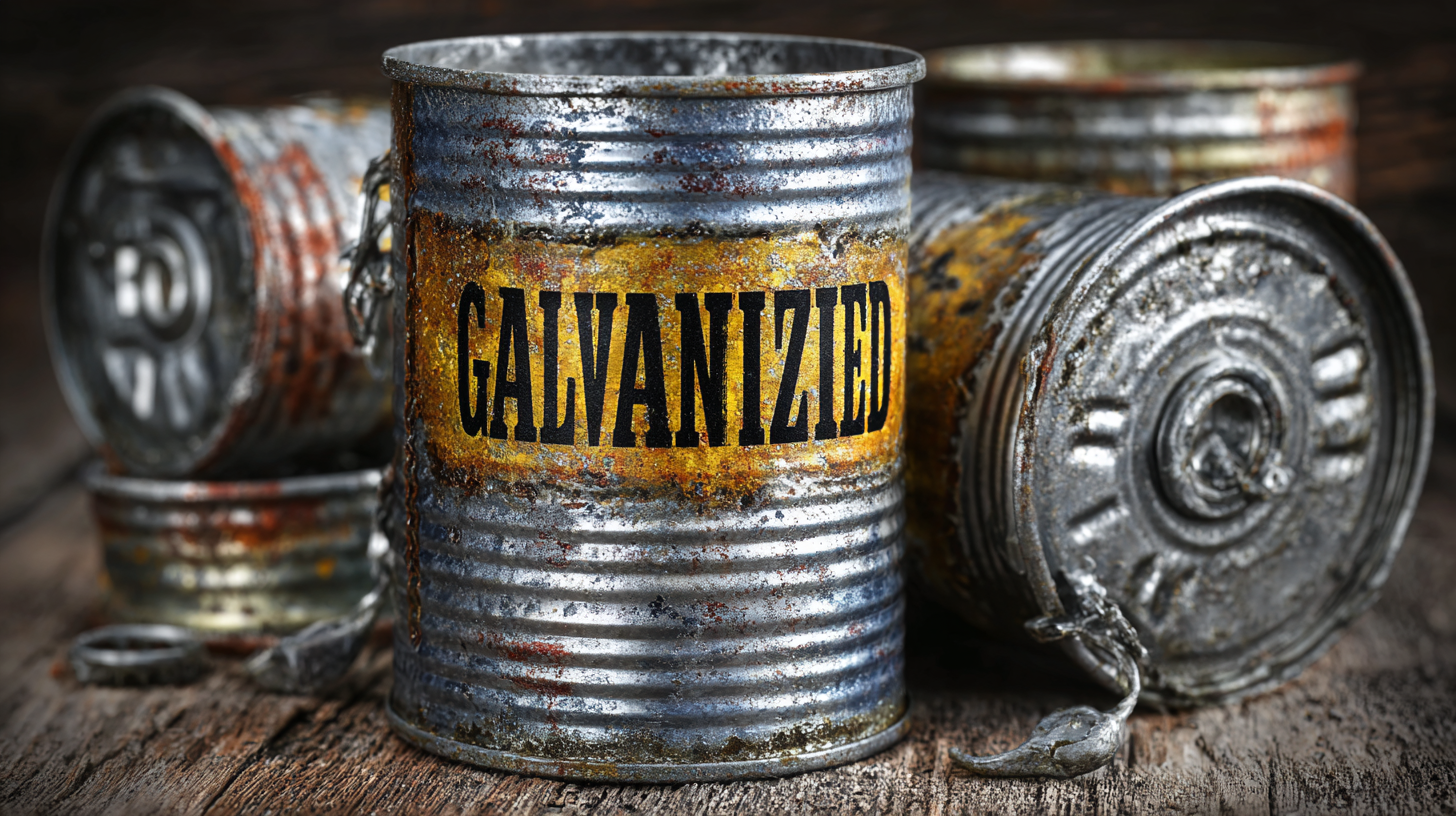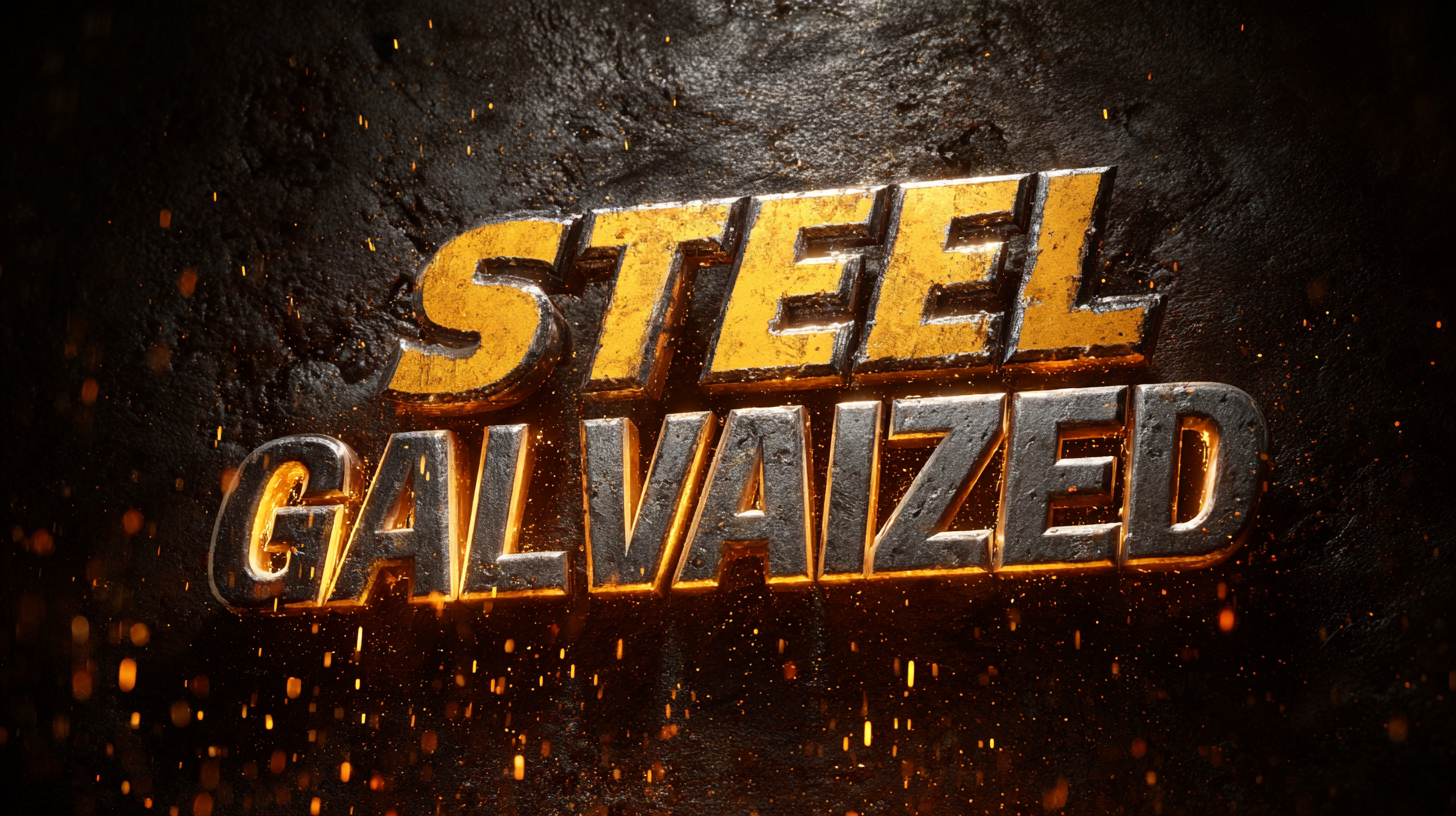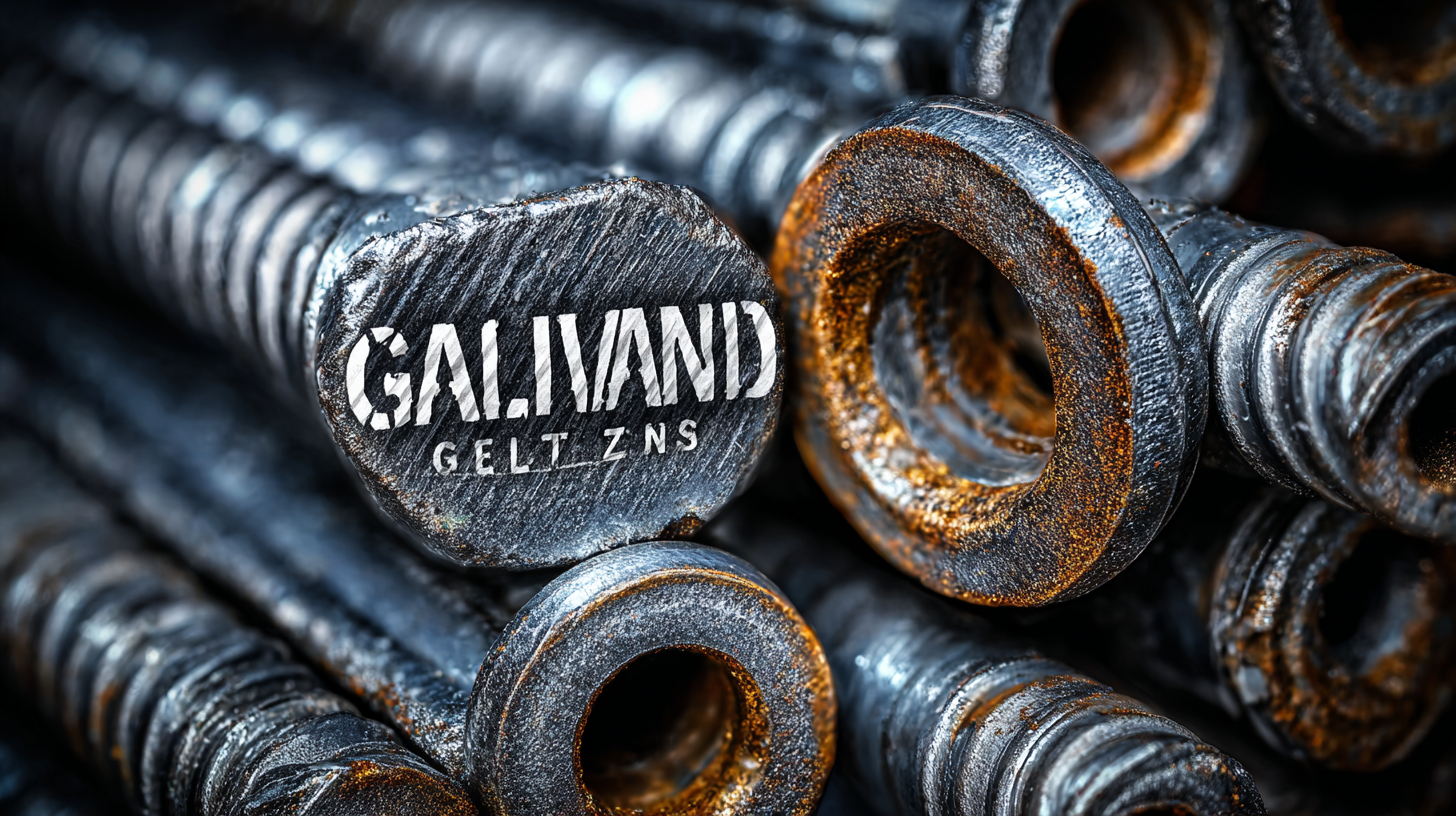
In today's industrial landscape, the demand for robust and sustainable materials continues to rise, with Steel Galvanized products at the forefront of this evolution. According to a recent report by Smithers Pira, the global market for galvanized steel is projected to grow by over 5% annually, driven by its exceptional corrosion resistance and longevity in various applications. From construction and automotive to telecommunications and HVAC systems, the versatility of Steel Galvanized products makes them essential in a multitude of sectors. However, with the vast array of options available, choosing the right galvanized steel can be daunting. This blog will explore the distinct features, diverse applications, and critical considerations to help you make informed decisions when selecting the best Steel Galvanized products for your specific needs.

Galvanized steel has become a cornerstone material in various industries, known for its enhanced durability and resistance to corrosion. The key features of galvanized steel include a protective zinc coating that significantly increases its lifespan, making it ideal for applications in harsh environments. This is particularly crucial in sectors like automotive, where components must withstand rigorous conditions, as well as in infrastructure, especially for high-speed rail systems and water distribution networks. The ongoing developments in coating systems for hot-dip galvanized steel (HDGS) further amplify its reliability, making it a preferred choice across these vital sectors.
When selecting the right galvanized steel product, it’s essential to consider factors such as the specific application requirements, the environmental conditions it will face, and the cost-effectiveness of the solution. As the global galvanized steel market is projected to grow steadily, understanding the unique benefits of galvanized products can facilitate smarter purchasing decisions. With innovations in coating technology, buyers can ensure that they choose products that not only meet regulatory standards but also provide long-term value and performance across various applications.
Galvanized products have become increasingly essential across various industries, owing to their exceptional durability and corrosion resistance. Common applications of galvanized steel include construction, automotive, and electrical industries. In construction, galvanized steel is widely used for roofing, cladding, and structural components, as its ability to withstand harsh weather conditions makes it an ideal choice for both residential and commercial buildings. The rise in infrastructure development projects globally further fuels the demand for materials like galvanized steel, which provides longevity and low maintenance costs.
The automotive sector also utilizes galvanized products extensively for body panels and components, ensuring vehicles not only maintain aesthetic appeal but also stand up to the challenges of environmental exposure. Meanwhile, in the electrical industry, galvanized rigid conduits offer robust protection for wiring systems, contributing to safety and reliability. As industries expand and modernize, the versatile applications of galvanized steel continue to highlight its significance in promoting sustainable practices and enhancing product performance. This growing trend is reflected in market forecasts, which predict substantial growth in the hot-dip galvanizing industry well into the next decade.

When selecting high-quality galvanized steel products, it is crucial to consider the manufacturers' reputation and their adherence to industry standards. According to recent market analyses, the U.S. hot-dip galvanized steel market is projected to grow significantly, with a share that indicates robust demand across various sectors. In 2023, this market was valued at several billion dollars, reflecting the increasing applications in construction, automotive, and appliances. A reliable manufacturer will have certifications that demonstrate their products meet these stringent quality standards.
Furthermore, buyers should assess the range of products offered by galvanized steel manufacturers. The market consists of various types such as sheets, strips, and pipes, each tailored to specific applications. For instance, the global galvanized steel market is expected to expand, influenced by growing construction activities, which accounted for a substantial portion of the demand. Understanding these market dynamics and potential growth can assist in making informed decisions when choosing the right galvanized steel products.
Selecting a manufacturer that exhibits innovation, quality control, and a comprehensive product lineup will ultimately serve the long-term needs of any project.
When it comes to galvanized steel products, the choice between hot-dip and electro-galvanized steel can significantly affect their performance in various applications. Hot-dip galvanizing involves immersing steel in molten zinc, resulting in a thicker, more robust coating that provides superior corrosion protection. According to a report by the National Association of Corrosion Engineers (NACE), hot-dip galvanized steel can last up to 50 years in harsh environments, making it ideal for outdoor structures, such as bridges and fences, where durability is crucial.
On the other hand, electro-galvanizing applies a thinner zinc coating through an electrochemical process. This method yields a smoother finish and better paint adhesion, making it suitable for applications like automotive parts and appliances where aesthetics are important. A study by the American Galvanizers Association indicates that while electro-galvanized steel typically lasts 5 to 20 years, it offers excellent long-term protection when used in less corrosive settings. Ultimately, the choice between hot-dip and electro-galvanized steel should align with specific project requirements, considering factors such as environmental exposure, desired lifespan, and aesthetic needs.
When it comes to maintaining galvanized products, proper care is essential to extend their lifespan and effectiveness. Regular inspections are crucial; check for signs of wear or corrosion. Early detection of issues allows for timely interventions, preventing minor problems from escalating into significant damage. Keeping the surface clean from dirt, grime, and salt can significantly enhance its durability.
Another key aspect of maintenance involves protecting galvanized items from scratching or abrasion, which can compromise the protective zinc coating. Consider using protective covers or wraps when these products are stored or transported. Additionally, applying a suitable touch-up paint on any exposed areas can help restore the integrity of the galvanization, ensuring the metal remains shielded from the elements. By adopting these simple maintenance practices, users can effectively enhance the performance and longevity of their galvanized steel products.
